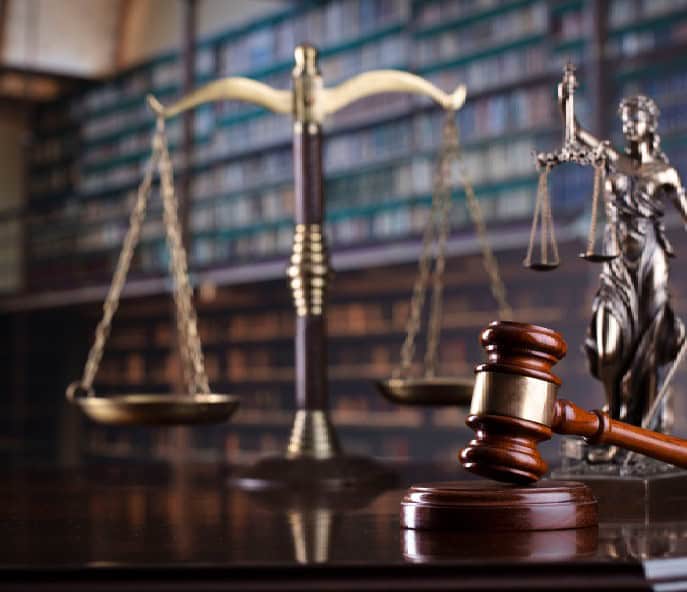Life wouldn’t be worth living for a lot of people without art, but when there are only a few people who make art, it becomes more valuable and precious. An artist’s or business’s ownership and ability to profit off of their works deserve to be protected. Without it, how do we expect artists to be able to keep making art? With the rise of AI, infringement on the ownership of creative works is on the rise as well. This makes it all the more important for artists and businesses to have the correct intellectual property protections.
But what is the correct type of IP protection for an artist’s work? With there being four different types of IP protection, you need to know you’re protecting your work correctly. If you use the wrong type of IP protection, it can mean next to nothing.
If you have questions on what type of protection your artistic work needs, contact the intellectual property attorneys at Emerson Thomson Bennett. We can help.
What Type of IP Protections Do Creative Works Need?
While patents and trade secrets don’t pertain to creative works, copyrights and trademarks do. There are works that can be protected by both copyrights and trademarks, which is where a lot of confusion surrounding this type of IP protection can come from.
To be specific, copyrights show ownership of a creative work or idea. More often than not, artistic works need copyrights, but there are times when they need trademarks instead or in addition to copyrights.
This is because trademarks can use creative works. Trademarks are recognizable signs, designs, or expressions that symbolize products, services, or brands. This does not just include the name of what’s being symbolized, but also their visual works like a logo. This means that sometimes pieces of art do not need a copyright, but a trademark instead.
What Types of Creative Works Need Copyrights?
There are many types of creative works that need copyrights more than trademarks. In most cases, it’s best to copyright every creative work you can, even if you already have the trademark for it. Here are all the types of creative works that you can and should copyright.
- Literary Works: If you’ve created any sort of written work in the realms of fiction, nonfiction, poetry, textbooks, reference works, directories, catalogs, advertising copy, compilations of information, computer programs, or databases, you’ve created a literary work. It does not need to be complete to be a literary work or to be copyrighted.
- Work of Visual Arts: Any painting, photograph, graphic, sculptural work, map, technical drawing, architectural work, or visual reproduction is a visual art. These include any two-dimensional or three-dimensional variants of the previously stated examples.
- Work of Performing Arts: A performing art is any musical or dramatic work that is intended to be performed for a live audience. If they can be recorded but are intended to be performed, that doesn’t stop them from being a performing art. These include musical works with and without lyrics, screenplays, movie and play scripts, pantomimes, and choreographic works.
- Sound Recording: When music is created with the intention of being recorded, it’s copyrighted as something different from a performing art. If you can or will perform it later, it’s still a sound recording if that’s how it was first created and intended to be released. If you initially intended to record and perform the work, it would be a sound recording first. If the recording is part of a motion picture/audiovisual, like a movie, television show, or video game, it would not be a sound recording.
- Motion Picture/Audiovisual Work: This includes moving visual media such as feature films, documentaries, animated films, television shows, videos, video games, other audiovisual work, and sub-works like music and artwork used in them. Graphics used in advertising are not part of the audiovisual work.
Comic books, due to their nature as both literary and visual pieces of work, can be copyrighted as Literary Works or Works of Visual Arts. Copyrights also protect aspects, characters, names, and concepts used in your book as long as they are not part of the public domain.
What Types of Creative Works Need Trademarks?
The number of creative works that need to be trademarked is significantly less than copyrights. Creative works that require trademarks include things used in your brand, such as:
- Visual arts for branding and logos
- Some sound recordings for jingles and advertising content
- Certain performances of a character if they are a part of your brand.
Contact the Intellectual Property Attorneys at ETB to Protect Your Creative Works
Many believe that if they have proof that they created something first, they don’t need a copyright, but a copyright is the best official proof that you created something. It’s a legal and long-lasting record of your accomplishments and creativity. Since they don’t last forever, it’s easy to forget to re-up them, but the attorneys at Emerson Thomson Bennett won’t forget.
We’ll make sure you always hold control of your copyrights and trademarks for your creative works. Then we’ll enforce your copyrights and trademarks against anyone who would infringe on them.





